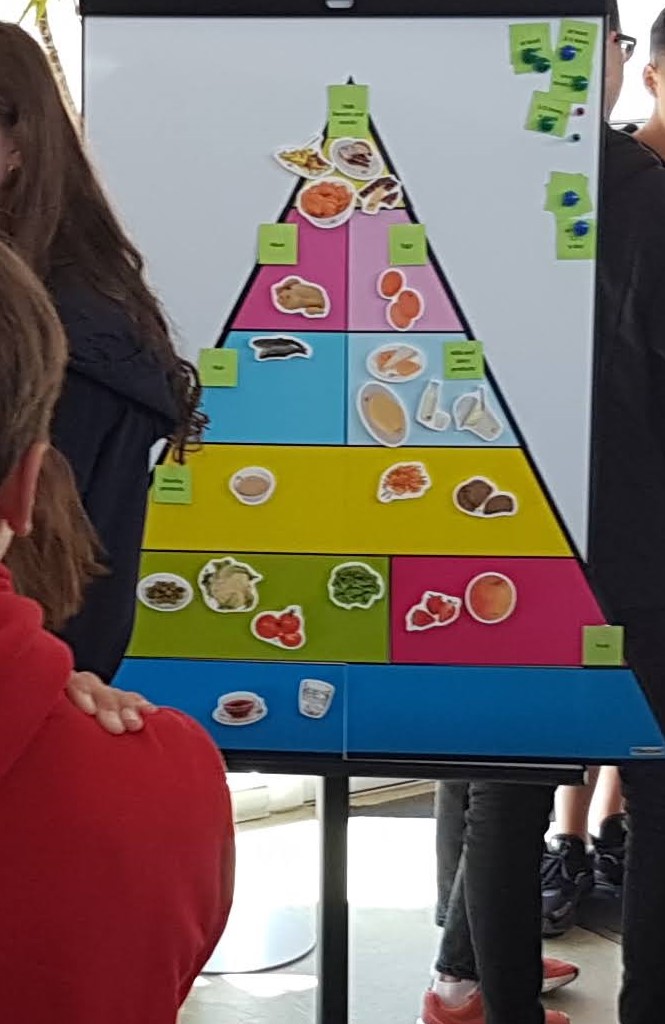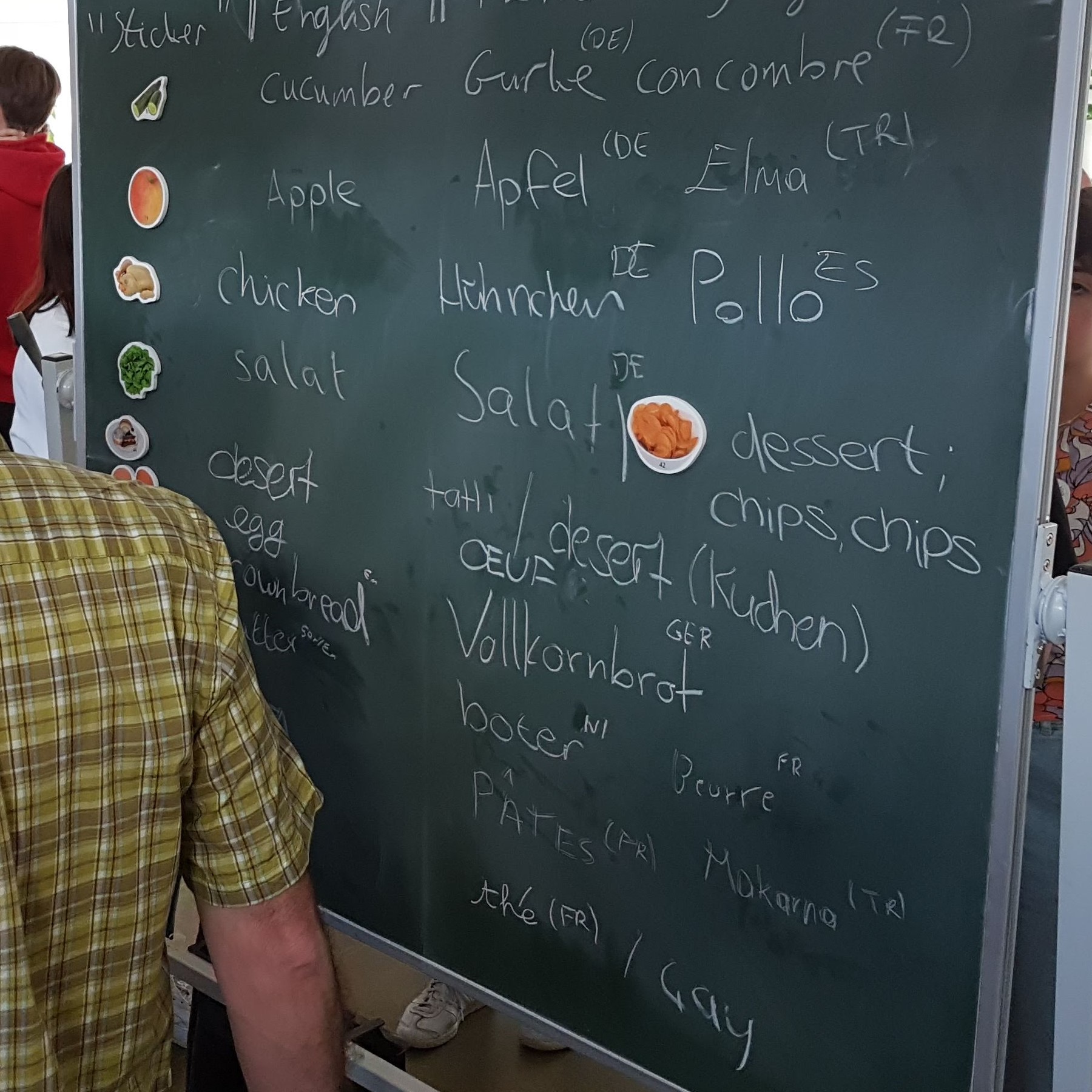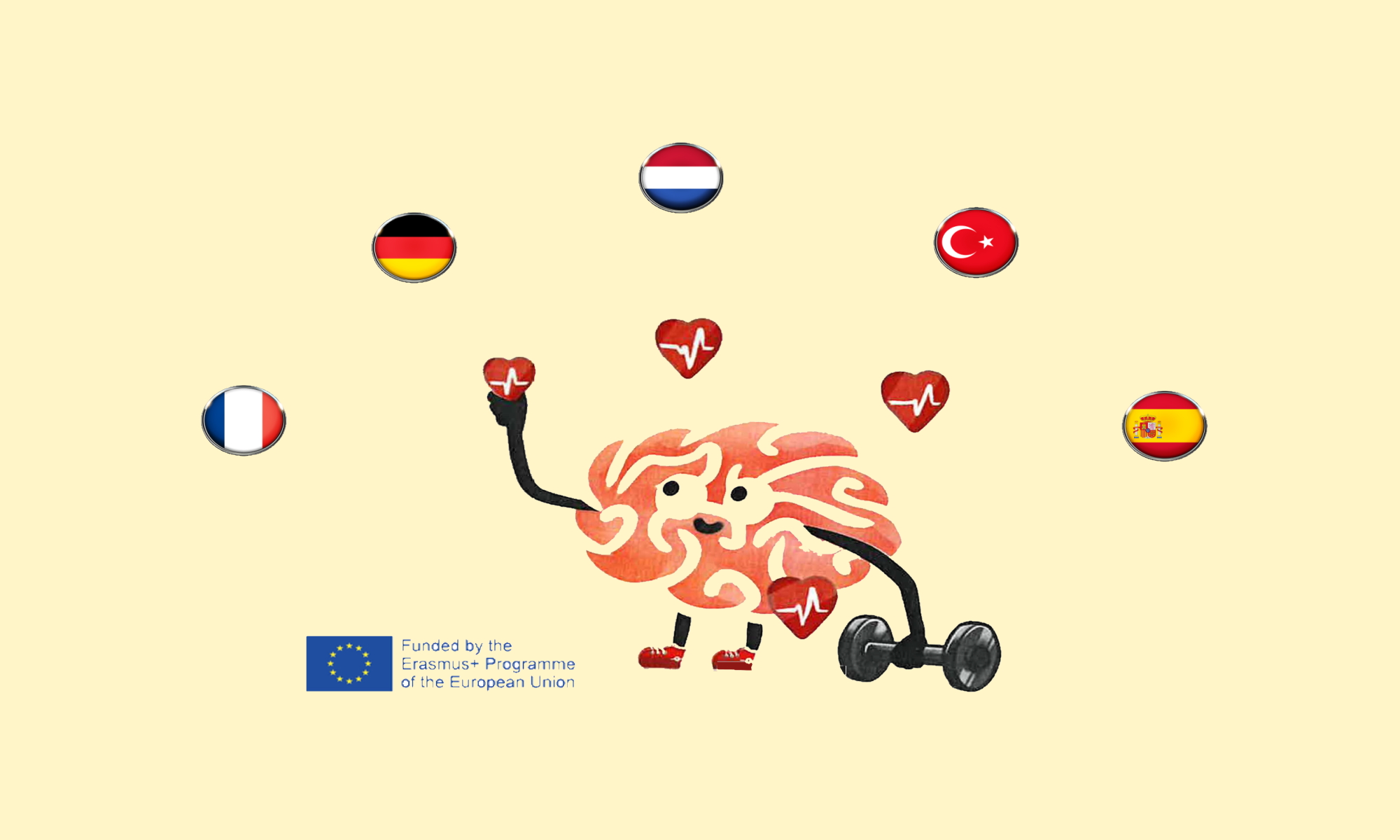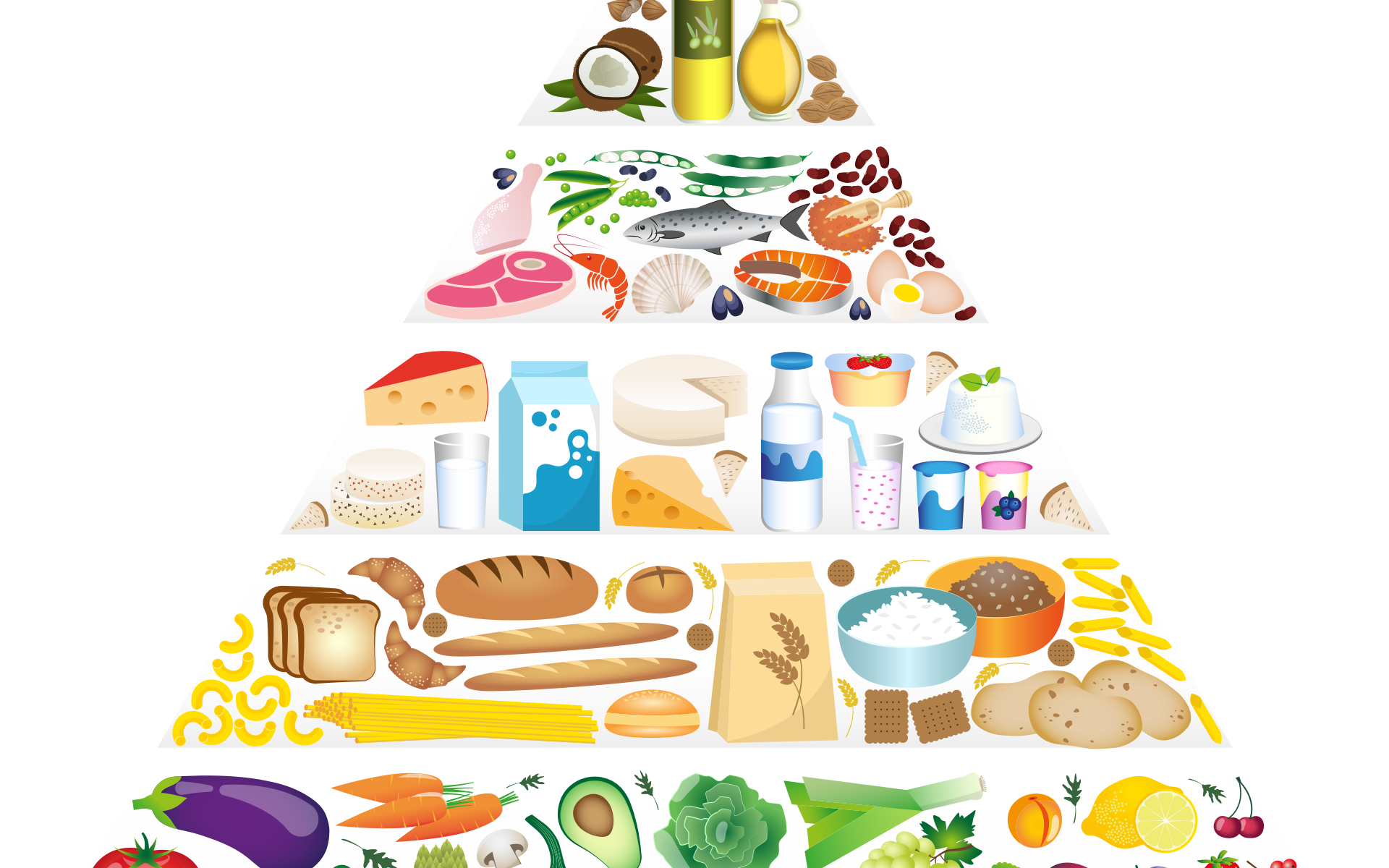What’s on the top of the food pyramid should not be on the top of the list of foods you eat every day…
Our food journey started out by looking at the food we might eat – and by getting to know each other.
For this purpose, students were handed magnetic cut-outs of typical food items (e.g. different types of vegetables, fruits, drinks, meats, legumes, snacks). Each food item was given to two different students.
In a first step, students were to find the partner with the same food item. As a team they then went on to complete the draft of a food pyramid, discovering the concept and the “position” of each food.
In another step, students did a short activity on language exchange: What is “their” food called in their language, in their partner’s language, in English?


Often, we were able to discover quite similar names for food in our languages. In some cases, “false friends” can, however, lead to misunderstandings. These we need to be aware of. For example: Does the word “pasta” mean the same in every language? In Spanish, it can mean a lot more than just Italian noodles (for example also building material, money or a small cakes), in Turkish as well it designates a cake, in French the word “pasta” does not really exist at all.

